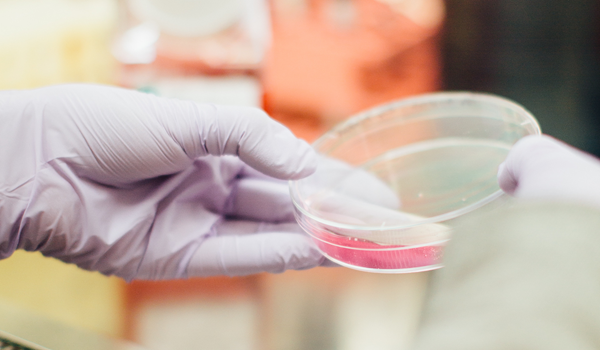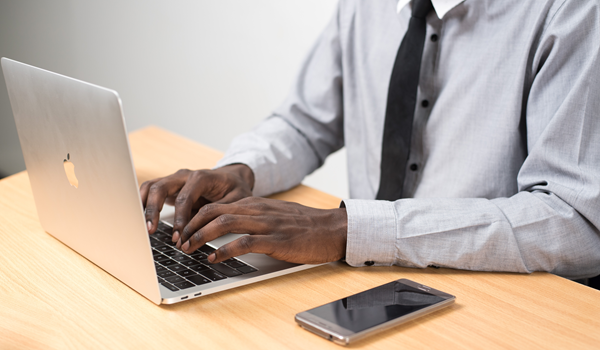Tests & Results
Results of Tests and Investigations
We encourge you to use the NHS App to view your test results. You will also see comments advising if these are normal or not and, if appropriate, an explanation for waht you should do next.
Blood, urine, stool and swab results should normally be availble to view 5-10 days after your test was taken, but can take longer.
Xray, ultrasound and MRI can take 4 weeks.
You can download the NHS App and access your results from the convenience of your phone/tablet or PC using the links below:
When you take your test you will be told how long it will be before the results are returned to the practice.
As part of clinical auditing processes, we will follow up to ensure you attend for requested tests and we will ensure a result is received. If a clinician needs to follow up with you about a result, we will make contact with you. If you do not hear from us, this will mean the result was reported as 'normal - no further action required', but you are still welcome to call reception at the times below to get more specific details. It is your responsibility to ensure you book and attend any follow up appointments.
Please contact the surgery by telephone between 9:30 – 12:00 and 13:30 – 15:00 to enquire about your results.
Please note that we do have a strict policy regarding confidentiality and data protection. In this respect we will only give out results to the person they relate to unless that person has given prior permission for their release or if they are not capable of understanding them.


Blood Tests
A blood test is when a sample of blood is taken for testing in a laboratory. Blood tests have a wide range of uses and are one of the most common types of medical test. For example, a blood test can be used to:
- assess your general state of health
- confirm the presence of a bacterial or viral infection
- see how well certain organs, such as the liver and kidneys, are functioning
A blood test usually involves the phlebotomist taking a blood sample from a blood vessel in your arm and the usual place for a sample is the inside of the elbow or wrist, where the veins are relatively close to the surface. Blood samples from children are most commonly taken from the back of the hand. The childs hand will be anaesthetised (numbed) with a special cream before the sample is taken.
You can find out more about blood tests, their purpose and the way they are performed on the NHS Choices website.
You can attend Lister, QEII or Hertford Country Hospitals to have a blood test BUT YOU WILL NEED TO BOOK AN APPOINTMENT. Link to book an appointment and find out more can be found here.
Prostate Test
If you request a PSA blood test to check the prostate, please read the leaflet below before you get the blood test. If you want to discuss the blood test in more detail before deciding if you want it, please make a routine appointment with one of our doctors.
If you decide to have the blood test, after you have had the test please fill out the questionnaire below and make an appointment with one of our doctors to see if any further action is required.
Urine Specimens
A healthcare professional may ask for a urine sample to help them diagnose or rule out certain health conditions.
Urine contains waste products that are filtered out of the body. If the sample contains anything unusual, it may indicate an underlying health problem.
Urine tests are most commonly done to check:
- for infections – such as a urinary tract infection (UTI) or some sexually transmitted infections (STI), such as chlamydia in men
- if you are passing any protein in your urine as a result of kidney damage – this is known as an ACR test
Details on how to take & store a sample can be found here.
Samples should be dropped to reception as soon as possible after collection, but only if requested by a clinician. Samples should be sealed in a sterile pot clearly marked with your name, address, date of birth & NHS number (if you know it). The pot should be placed in a specimen bag, with either the request form that the clinician provided for you or a urine dip testing form (which is available from reception).
Stool Specimens
A healthcare professional may ask you for a stool sample to help them diagnose or rule out a particular health condition.
Poo (stool) contains bacteria and other substances that are in the digestive system. By testing the levels of these substances and bacteria in your poo, it's possible to work out what's happening in your digestive system.
For example, the sample can be tested to help diagnose:
- gastroenteritis – a common condition that causes diarrhoea and vomiting, and is usually the result of a bacterial or viral tummy bug
- inflammatory bowel disease – such as Crohn's disease , a condition that causes inflammation of the lining of the digestive system, and ulcerative colitis, a condition where the colon and rectum become inflamed
Details of how to take & store a sample can be found here.
Samples should be dropped to reception as soon as possible after collection. Samples should be sealed in a sterile pot clearly marked with your name, address, date of birth & NHS number (if you know it). The pot should be placed in a specimen bag, with the request form that the clinician provided for you.
FIT Tests
Based on your symptoms the clinician may ask you to do a FIT (Faecal Immunochemical Test). This is a special type of stool (poo) test that looks for blood in a sample of your poo. It looks for tiny traces of blood that you might not be able to see and which could be a sign of cancer.
Traces of blood in your poo can be caused by other medical conditions and doesn’t necessarily mean you have cancer. But if it is cancer, finding it at an early stage means treatment is more likely to work.
Further details of how to take & store a sample can be found here.
X-Rays
An X-ray is a widely used diagnostic test to examine the inside of the body. X-rays are a very effective way of detecting problems with bones, such as fractures. They can also often identify problems with soft tissue, such as pneumonia or breast cancer.
If you have an X-ray, you will be asked to lie on a table or stand against a surface so that the part of your body being X-rayed is between the X-ray tube and the photographic plate.
An X-ray is usually carried out by a radiographer, a healthcare professional who specialises in using imaging technology, such as X-rays and ultrasound scanners.
You can find out more about x-ray tests, how they are performed, their function and the risks by visiting the NHS Choices website.
You can attend the Lister, QEII or Hertford County Hospitals for x-rays and the requests are now sent electronically, so you do not need to take any paperwork with you.
In order to support social distancing, the walk-in service is for those needing a chest x-ray only. All other requests will be allocated an appointment to attend, which will be sent to you.
Walk In Opening Times (for Chest X-Rays Only) Monday to Friday only
| Lister Hospital | New QEII Hospital | Hertford County Hospital |
| 8.30 to 4.00pm | 8.30 to 4.30pm | 8.30 to 12.30pm & 2.00 to 4.30pm |
Ultrasound Scans
An ultrasound scan, sometimes called a sonogram, is a procedure that uses high-frequency sound waves to create an image of part of the inside of the body. An ultrasound scan can be used to monitor an unborn baby, diagnose a condition, or guide a surgeon during certain procedures. If you have been advised to have an ultrasound scan, once the clinician has made the request, the hospital will contact you directly, usually by letter, with an appointment. Please read the letter carefully as it will provide specific preparation details that may be required for your scan. Further information about ultrasound scans and how they are performed is available on the NHS Choices website.
CT Scans
A computerised tomography (CT) scan uses X-rays and a computer to create detailed images of the inside of the body.
CT scans are sometimes referred to as CAT scans or computed tomography scans.
They're carried out in hospital by specially trained operators called radiographers, and can be done while you're staying in hospital or during a short visit.
If you have been advised to have an CT scan, once the clinician has made the request, the hospital will contact you directly, usually by letter, with an appointment. Please read the letter carefully as it will provide specific preparation details that may be required for your scan.
Further information about ultrasound scans and how they are performed is available on the NHS Choices website.
MRI Scans
Magnetic resonance imaging (MRI) is a type of scan that uses strong magnetic fields and radio waves to produce detailed images of the inside of the body.
An MRI scanner is a large tube that contains powerful magnets. You lie inside the tube during the scan.
An MRI scan can be used to examine almost any part of the body, including the:
- brain and spinal cord
- bones and joints
- breasts
- heart and blood vessels
- internal organs, such as the liver, womb or prostate gland
The results of an MRI scan can be used to help diagnose conditions, plan treatments and assess how effective previous treatment has been.
If you have been advised to have an MRI scan, once the clinician has made the request, the hospital will contact you directly, usually by letter, with an appointment. Please read the letter carefully as it will provide specific preparation details that may be required for your scan.
Further information about ultrasound scans and how they are performed is available on the NHS Choices website.
Page created: 13 November 2023